Similar presentations:
Human locomotion system
1. HUMAN LOCOMOTION SYSTEM
outlineFunctions
Structure
Bone formation,
growth and types
Parts of human
skeleton
objectives
key terms
Functions
Types of muscle
tissue
Structure of
muscles
Joints
Muscle contraction
Disorders
Energy supply
Homework
Homework
2. Skeletal System
SKELETAL SYSTEMSkeletal system is the supportive and protective system
of organisms
There 2 types of skeletal system in organisms:
1. Exoskeleton: seen mainly in invertebrates
2.
Endoskeleton: seen in vertebrates, sea stars, sponges
3. Human Skeletal System
HUMAN SKELETAL SYSTEMFunctions:
Supports the body
Provides movement with the
help of muscles
Protects inner organs
Produces blood cells
Stores minerals such as P
(phosphorus) and Ca
(calcium)
4. Structure of human skeleton
STRUCTURE OF HUMAN SKELETONHuman skeleton is composed of bones and cartilage
Bones are composed of cells known as osteocytes
Osteocytes are arranged in circles and connected to each other by
cytoplasmic bridges
There is haversian canal between cicrles, it contains blood vessels
and nerves
Intracellular space is filled by matrix (ossein) that contain Ca, P,
carbonate and protein.
Cartilage is composed of cells chondrocytes
osteocyte
5.
6. Bone
BONEOuter cover of bones known as
periosteum
Periosteum provides growth in
diameter and repair of bones
There are 2 types of bone tissue:
1. Compact: very dense and strong
2. Spongy: porous and soft
Space between bones is filled with
bone marrow
Red bone marrow: fills space
between spongy bones and
produces blood cells
Yellow bone marrow: fills hollow
interior space of bones
7. Formation of bone
FORMATION OF BONEFor bone formation and normal growth
minerals such as Ca, P and vitamins A,
C and D needed
Deficiency of vitamin D causes rickets
– рахит, A growth rate decreases, C
causes weakness and disease scurvy –
цинга
Ca level in blood is regulated by
hormones parathormone, released by
parathyroid gland, and calcitonin,
released by thyroid gland
Parathormone: is secreted when Ca
level is decreased in blood
Calcitonin: is secreted when Ca level is
increased from blood
8. Types of bones
TYPES OF BONES1. Long bones:
Ex:
bones of
legs, arms …
2. Flat bones:
Ex: bones of
skull, rib,
patella …
3. Short bones:
Ex” bones of
vertebrae,
hand, fingers,
foot …
9. Parts of Human Skeletal System
PARTS OF HUMAN SKELETAL SYSTEMAdult human contains 206 bones, in babies it is
approximately 300
Skeleton parts:
1. Skull
2.
Trunk
3.
Extremites
10. 1. Skull
1. SKULLSkull
includes 22 bones
8 of them cranial, 14 are
facial bones
Cranial bones are fused to
each other and
immovable
11.
12. 2. Trunk
2. TRUNKTrunk
includes vertebral column, ribs,
sternum, pelvic girdle and pectoral girdle
Vertebral column:
Vertebral column consists of 33 vertebrae
Between each vertebrae there is
cartilaginous disc, and vertebral column is
slightly movable
Vertebral column protects spinal cord
Upper end connected to Skull, lower end to
Sacrum
13.
14.
ChestIt protects heart and lungs that has 12 pairs of ribs
and a sternum.
All ribs are connected to vertebrae on the back side.
Ribs are connected to sternum in the abdomen. But
11th and 12th ribs are free floating ribs.
15. Pectoral girdle – плечевой пояс
PECTORAL GIRDLE – ПЛЕЧЕВОЙ ПОЯСIt
includes 2 paired bones that hold up
arms:
Clavicle
Scapula
16. Pelvic girdle – тазовый пояс
PELVIC GIRDLE – ТАЗОВЫЙ ПОЯСIt
is connected to the lower end of vertebral
column (sacrum)
It holds legs and reproductive organs
Includes:
Ilium
Ischium
Pubis
17.
Vertebral column is divided into 5 parts1. Cervical or neck – 7 vertebrae
2. Thoracic – 12 vertebrae
3. Lumbar – 5 vertebrae (largest)
4. Sacral – 5 fused vertebrae
5. Coccyx or tailbone – 3 to 5 fused vertebrae
18. 3. Extremites - конечности
3. EXTREMITES - КОНЕЧНОСТИExtremites in other words appendages include upper
extremites and lower extremites
a. Upper:
2 arms and include 30 bones each, bones:
Humerus 1*2
Ulna 1*2
Radius 1*2
Carpals 8*2
Metacarpals 5*2
Phalanges 14*2
19.
b. Lower extremites:2 legs, include 30 bones each, bones:
Femur 1*2
Patella 1*2
Tibia 1*2
Fibula 1*2
Tarsals 7*2
Metatarsals 5*2
Phalanges 14*2
20.
21. Joints
JOINTSJoint
forms the junction between
two or more bones
There are three types of joints;
1. Immovable joints
2. Slightly movable joints
3. Movable joints
22. 1. Immovable joint
1. IMMOVABLE JOINTJointed bones cannot move
All cranial and facial bones except mandible and sacrum
are immovable
There is no synovial fluid between bones
23. 2. Slightly movable joints
2. SLIGHTLY MOVABLE JOINTSConnected by cartilage or connective tissue
Vertebrae are connected by cartilage and ribs to sternum
also connected by cartilage
24. 3. Movable joints
3. MOVABLE JOINTSThe bones in movable joints are connected to each other
by ligaments (very strong connective tissue fibers).
There is a synovial fluid and cartilage in movable joints
which reduce friction.
25. Types of movable joints
TYPES OF MOVABLE JOINTSBall-and-socket
Hinge
Pivot
26. Disorders and diseases of human skeletal system
DISORDERS AND DISEASES OF HUMANSKELETAL SYSTEM
Fractures
– is a broken bone
because of high physical impact or
some other bone disorders
Osteoporosis
– disease which
occurs when there is not enough
deposition of calcium in bones and
because of that bones get weaker
Rheumatism
Arthritis
Scurvy
Scoliosis
27. Types of fractures
TYPES OF FRACTURES28. Osteoporosis
OSTEOPOROSIS29. Muscular system
MUSCULAR SYSTEMMuscular
system helps in the
movement of body, inner organs and
also helps in protection of body
organs
The units of muscular system are
cells known as myofibrils
Myofibrils have the ability to
contract and relax
30.
31. Types of muscular tissue
TYPES OF MUSCULAR TISSUEThere
are 3 types of
muscular tissue, they are:
1. Smooth muscle
2. Skeletal muscle
3. Cardiac muscle
32.
33. 1. Smooth muscle
1. SMOOTH MUSCLEEach
cell is long, sharp-ended with a single
central nucleus
Smooth muscles generally regulated by the
Autonomic Nervous System (ANS)
Their movement is generally irregular and slow
They are found in the walls of inner organs, like
stomach, intestine, blood vessels, urinary
bladder etc.
34.
35. 2.Skeletal or striated muscle
2.SKELETAL OR STRIATED MUSCLECells
are long, cylindrical and
multinuclear, i.e. have many nucleuses
They are also termed as muscle fibers,
because they are not branched
The structure of skeletal muscles:
Muscle bundles, muscle fibers,
myofilaments (actin and myozin proteins)
36.
37.
Skeletalmuscles cover the skeleton
They provide movement of skeleton and
by that body
It is controlled by brain, by Somatic
Nervous System (SNS)
It contracts rapidly
When it is overworked, maximal potential
power is used, it gets hardened and this
state is called as tetanus (судороги)
38.
39. 3.Cardiac muscle
3.CARDIAC MUSCLECells
are long, cylindrical, branched and
with 1 nucleus in the center of the cell
They have more mitochondria than
skeletal muscles
Each cell is rich in blood and lymph
vessels
They are controlled by ANS
Cardiac muscles function involuntarily
40.
41. Muscular contraction
MUSCULAR CONTRACTIONMuscle
cells’ membrane is called as
sarcolemma
Muscle cells’ cytoplasm is called as
sarcoplasm
The contraction unit of myofibrils is called
sarcomere
Sarcomere contracts and relaxes by the help
of proteins actin and myozin
Actin and myozin proteins slide on each other
by the help ATP energy and Ca2+
42.
43.
44. Energy Supply For Muscles
ENERGY SUPPLY FOR MUSCLESThe
energy reserve in the muscles can only
supply energy for 5 seconds.
During contraction, CREATIN PHOSPHATE
(which supplies 20 times more energy than
ATP) is used as the primary energy source.
Then ATP is used as the secondary energy
source.
Only ATP is used during relaxation.














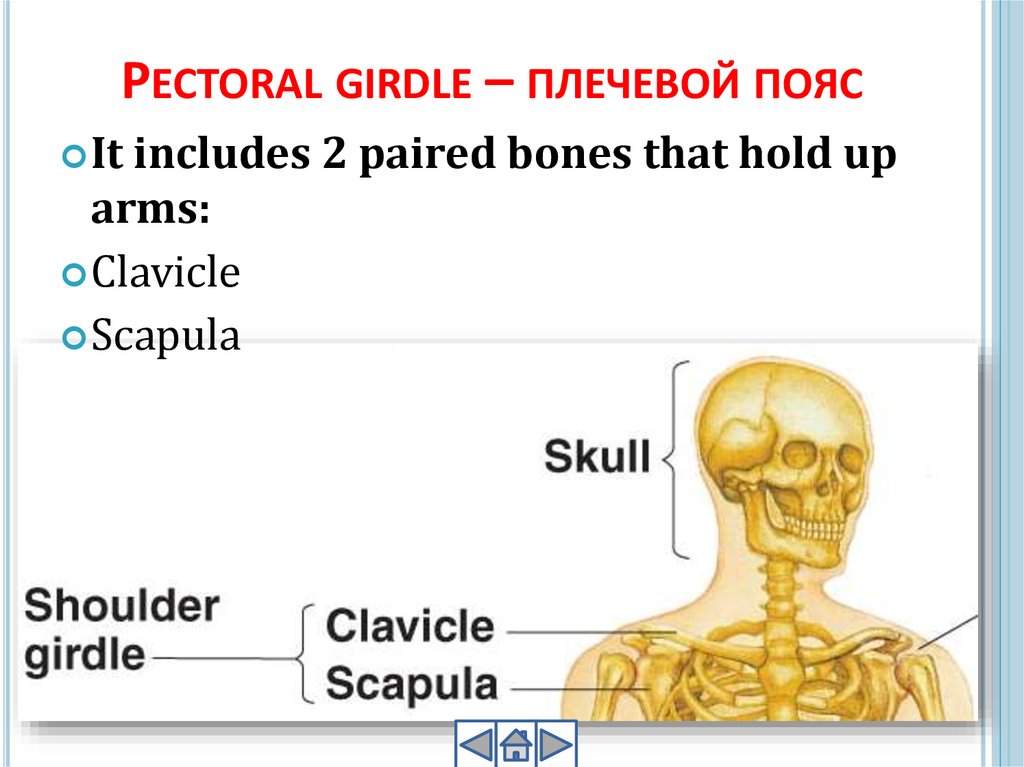







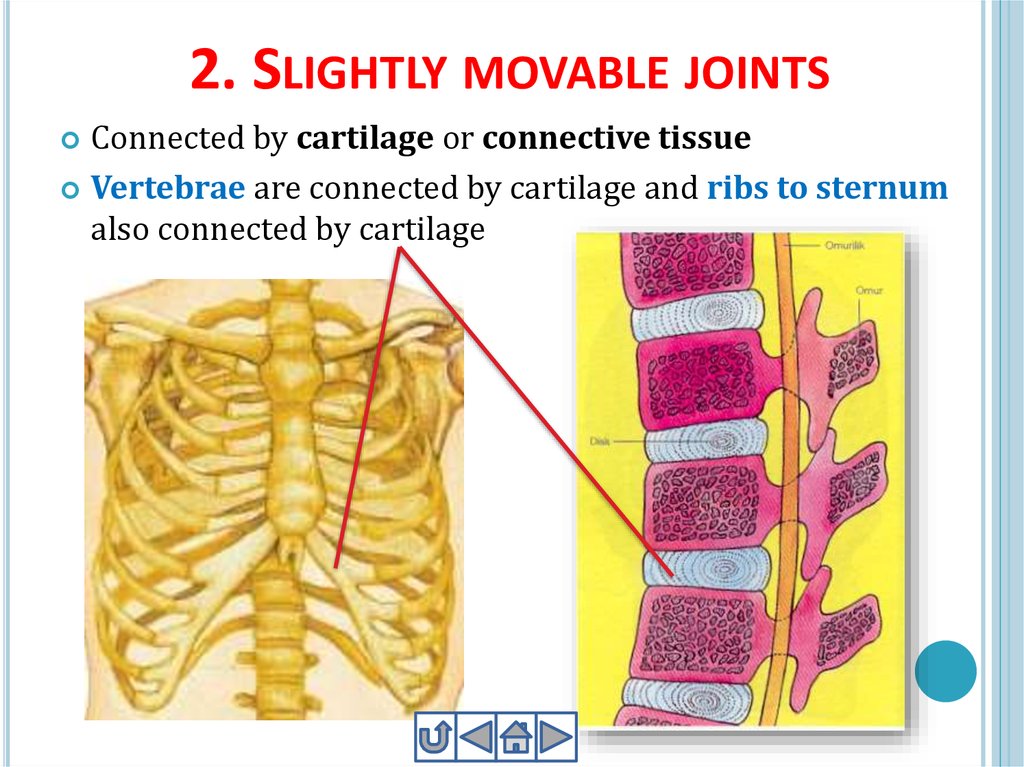





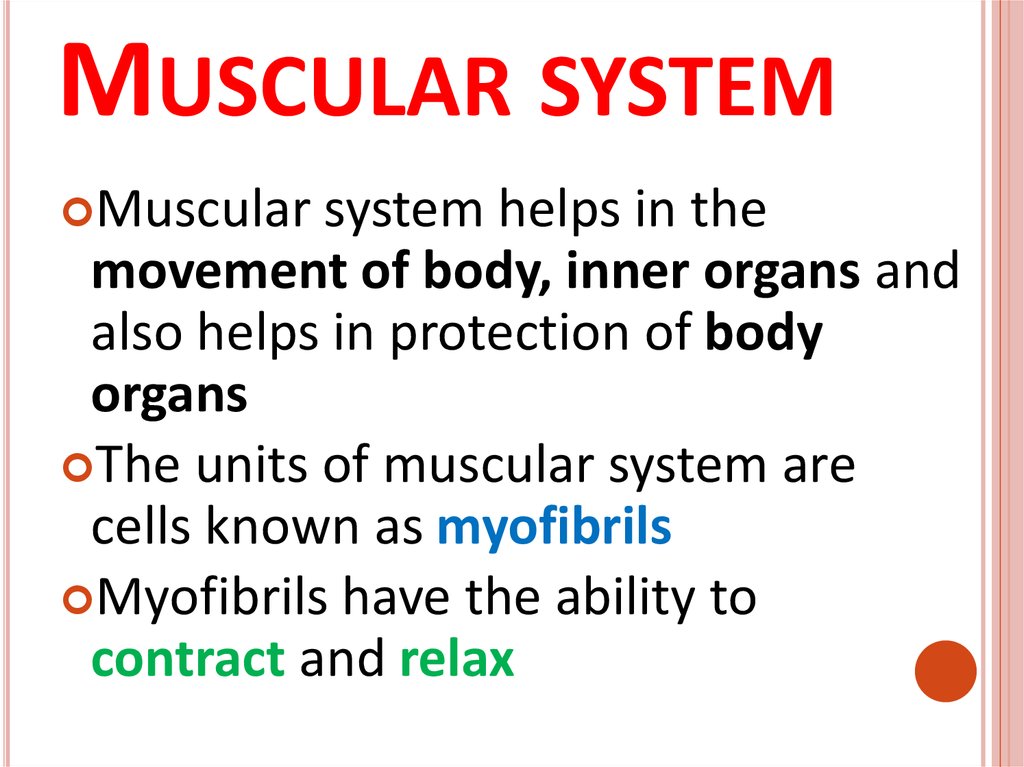






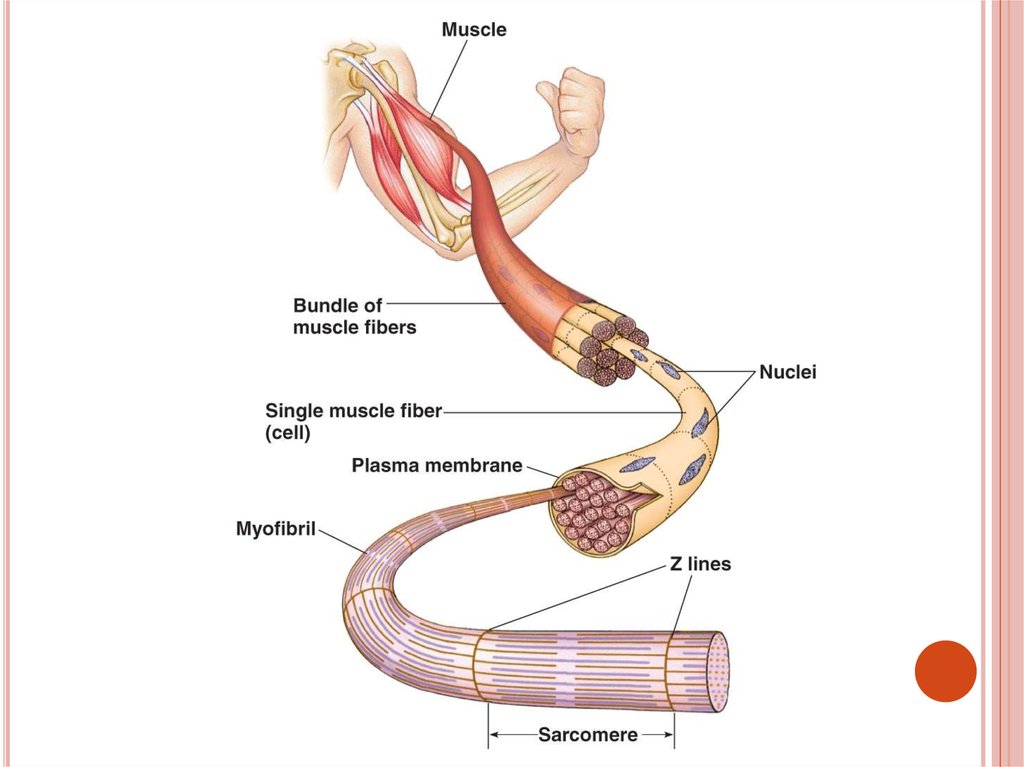



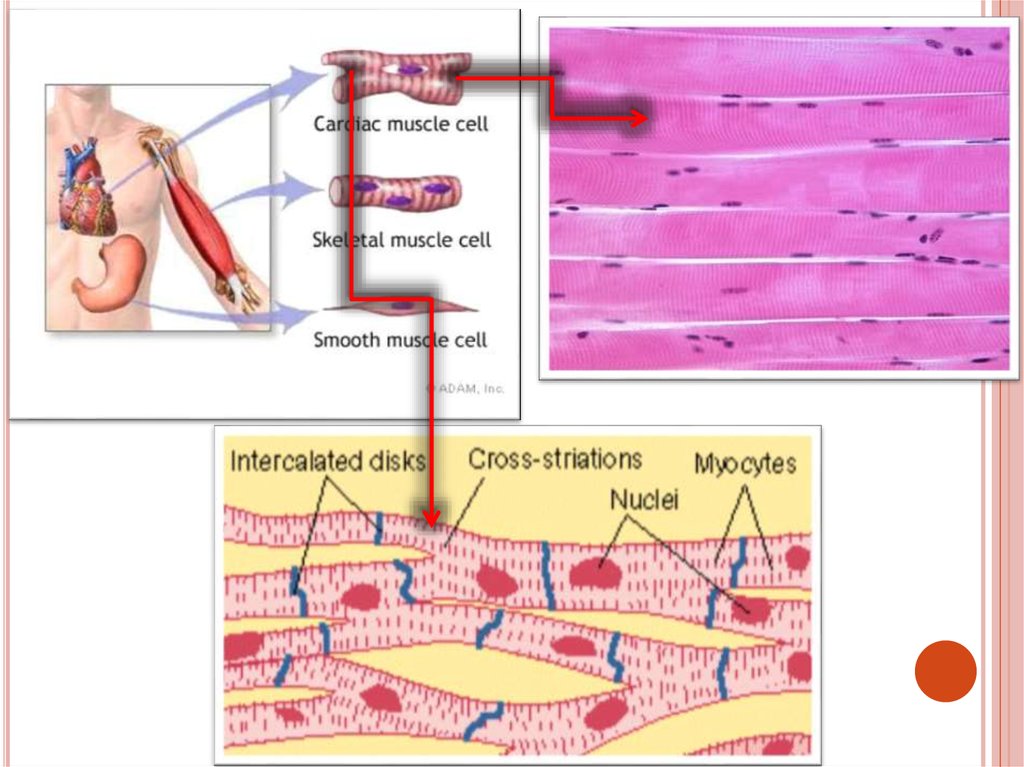




 biology
biology








